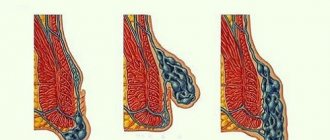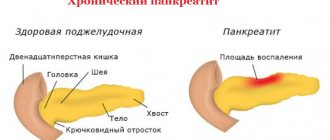Ways of infection with hepatitis C in men
Hepatitis C in men develops through contact with the blood of a patient infected with this disease. The virus is also present in small concentrations in semen and vaginal secretions. Infection can occur during unprotected sexual intercourse without using a condom.
Note! Hepatitis C is also transmitted from mother to fetus. The risk of developing the disease increases if a woman has HIV infection.
The disease is not transmitted by kissing or shaking hands. Hepatitis cannot be contracted through household means: by using shared dishes or bed linen. The disease is not transmitted when visiting a swimming pool or public beach.
A man should not use other people's toothbrushes, manicure tools or shaving accessories. They may contain fragments of infected blood.
What is alcoholic hepatitis
The nature of liver damage and the development of the disease are in many ways similar to hepatitis C: the symptoms in men and treatment are often the same. The pathology manifests itself in acute or chronic form, and in the same way, as it progresses, it causes complications and can lead to death.
But this is where the similarities end, since organ damage occurs not as a result of destruction by a virus, but by systematic alcohol poisoning. Unlike infectious hepatitis, alcoholic hepatitis is not transmitted to others.
Although the hepatitis C virus has not yet been defeated, every man has a chance to maintain health and life. You just need to be careful and take the necessary precautions.
Signs of hepatitis C in men in the early stages
In most cases, there are no symptoms during the incubation period for hepatitis C in men. This period lasts from 14 days to 6 months.
In the pre-icteric period, the following symptoms occur in the early stages of the disease:
- weakness;
- fatigue;
- loss of appetite;
- pain in the joints;
- increased body temperature;
There are also such first signs of the disease as nausea and discomfort in the right hypochondrium.
This is interesting: Hepatitis C: early and late stages of the disease
The period of jaundice is characterized by the appearance of the following symptoms:
- yellow tint to the skin and eye whites;
- discomfort in the abdominal area;
- nausea;
- dizziness;
- headache;
- worsening sleep;
- the appearance of a sweetish (liver) odor from the mouth.
In severe cases, acute liver dystrophy occurs during the period of jaundice. There are several types of skin rash associated with hepatitis C:
- nodular rash resembling hives;
- pinpoint hemorrhage;
- bluish mesh rash.
Hepatitis C in men also manifests itself with the following symptoms:
- dark coloration of urine;
- discoloration of stool. In the presence of a dangerous disease, the concentration of stercobilin in the feces, which gives the feces a brown tint, decreases.
the influence of disease and modern drugs on potency
It has long been proven that this disease more often affects the stronger sex. It is diagnosed less frequently in women. Despite the fact that the viral disease has not reduced its scale in the 21st century, we have learned how to effectively combat it. The sick in our country are also being healed using new methods. So what do infected males need to know about the disease and how to combat it? Does hepatitis C affect potency or not? Let's listen to the explanations of the professionals.
Symptoms of hepatitis C in men
Statistics state: 72% of all infected people find out about the disease late. Accordingly, therapy begins when there is a clear deterioration in the general condition. The reason is the hidden clinical picture of the disease. At the initial stage, which doctors call incubation, it does not manifest itself at all. During this time (2 weeks or six months), the patient feels well and does not notice any changes in well-being. He perceives rare manifestations of weakness as fatigue. This is the first sign of the disease. But today people don’t rush to the doctors with such a symptom, especially gentlemen. The pre-icteric stage is characterized by:
- Increase in temperature to the level of low-grade fever;
- Mild and infrequent pain in the right upper abdomen;
- Mild feeling of nausea;
- Worsening cravings for food, even favorite foods;
- Itching;
- Pain in the joints is aching and short-term.
The latter is not observed in all infected people, but rather in the elderly.
The next stage of progression of the disease is jaundice. This is the sign that is considered the main informative one. But often the skin does not acquire the typical yellowness, but a greenish pallor and grayness. They look unhealthy. At this stage, the patient notices problems with stool: digestion is disrupted, because the diseased liver can no longer secrete bile normally and in the required quantity. This is the cause of abdominal pain. But even in the icteric period, most infected people are in no hurry to get examined and buy sofosbuvir.
It becomes more difficult for patients to fall asleep in the evening; during the day they feel drowsiness, loss of energy, and lack of sleep. Accordingly, performance decreases noticeably. The main symptom of acute HCV infection may be the appearance of a skin rash. In appearance, it can be spotty and acne-like, nodular and net-cyanotic. It usually appears along with itching.
Darkening of urine is another specific sign of the disease associated with disturbances in the metabolism of bilirubin (a protein breakdown product). The failures are again to blame for the weakened liver, whose cells are not able to neutralize the specified substance. Bilirubin provokes a specific yellowness of the skin, darkening of urine and both
Symptoms of advanced forms of hepatitis C in men
The following signs of chronic hepatitis C in men are distinguished:
- weakness;
- increase in temperature (up to 37.9° C);
- enlargement of the mammary glands;
- feeling of heaviness in the area of the right hypochondrium;
- lack of sexual desire.
In the later stages of the disease, pain occurs in the joints. The following symptoms are also diagnosed:
- feeling of dry mouth;
- the presence of itchy blisters on the body that are filled with clear liquid;
- damage to the lacrimal glands.
Hepatitis C is also dangerous and has the possibility of complications listed in a small table.
| Complications | Main features |
| Behçet's disease | With Behçet's disease, an inflammatory process occurs in the vascular area and thrombosis develops. The male genitals are covered with ulcers, after healing of which a scar forms on the affected area. With Behcet's disease, the mucous membrane of the eyes is often affected - increased lacrimation occurs |
| Prurith | With this pathology, severe itching and a feeling of flaking occur in a separate area of the body. |
| Sialadenitis | With sialadenitis, damage to the salivary glands occurs, which is accompanied by severe swelling, necrosis, and suppuration. The patient has difficulty swallowing food, pain when turning his head |
Treatment of hepatitis C
Hepatoprotectors are actively used in the treatment of hepatitis C. The corresponding tablets can increase the liver’s resistance to pathogenic factors. Hepatoprotectors made from glycyrrhizic acid are actively used. This active component is present in licorice root.
This is interesting: Hepatitis C genotype 1a: diagnosis, treatment regimen, prognosis
Interferon is also used in complex therapy of hepatitis C. This medicine is contraindicated in case of heart rhythm disturbances or severe diseases of the endocrine system. Interferon should not be taken if you are hypersensitive to the components of the medication.
When using Interferon, the following complications occur:
- hair loss;
- hormonal imbalance;
- the occurrence of headaches;
- irritability;
- decreased iron levels in the body.
The use of the drug “Ribavirin” is contraindicated during breastfeeding and pregnancy. The drug should not be taken by patients with liver failure. The drug is contraindicated in case of hypersensitivity to the ingredients of the drug.
When using Ribavirin, the following side effects may occur:
- headache;
- weakening of sexual desire;
- feeling of dryness in the mouth;
- decreased appetite;
- dyspnea;
- nausea;
- blurred vision.
In the complex treatment of hepatitis C, a variety of folk remedies are also used. Similar medications are listed in the table.
| Product name | Manufacturing and application diagram |
| Tincture made from milk thistle | You need to pour 40 grams of medicinal plant seeds with 450 ml of vodka. The product is infused for two weeks. After this, the drink is filtered. Before use, the medicinal tincture is diluted with water: in the proportion of 100 ml of liquid per ½ teaspoon of product. The duration of treatment is 2 months. The tincture is taken three times a day approximately 20 minutes before meals. |
| Corn silk infusion | To prepare a remedy against hepatitis C in men, 10 grams of crushed corn silks are poured into 0.2 liters of boiling water. The resulting mixture is infused for 2 hours. The product is taken 20 ml three times a day |
| A decoction made from rhubarb root | In the process of preparing the drink, 10 grams of crushed plant roots are poured into 200 ml of boiling water. The resulting mixture should be simmered over low heat for 15 minutes. Then the container with the broth is wrapped in a warm towel. The product is infused for 8-10 hours, filtered. Take 50 ml of decoction before meals. You can add a small amount of honey to the product. Treatment continues for 3-4 weeks . |
The patient is advised to follow a strict diet. The following products are excluded from the diet:
- salinity;
- smoked meats;
- sorrel;
- marinades;
- fatty meats;
- radish;
- ice cream;
- baked goods;
- sweet sparkling water;
- animal fats;
- strong brewed tea;
- coffee;
- salty cheeses.
You should also stop drinking alcohol. Alcohol reduces the effectiveness of treating the disease.
Is it possible to get rid of hepatitis C forever?
The hepatitis C virus was discovered relatively recently, but doctors traditionally believed that it was impossible to cure the disease. The first thing their patients asked was whether the disease was curable and how to continue living with this disease. For a long time, the answers to these questions remained disappointing.
However, recently in the scientific world there has been a real revolution in the issue of getting rid of this terrible disease. The previously used treatment regimen for hepatitis C was found to be ineffective and also produce serious side effects. Now a new drug has been developed that can cure hepatitis even with the development of liver cirrhosis and in people with viral immunodeficiency. After treatment with such a drug, not only the disease is cured, but there are no serious complications from the therapy. Studies of the drug on patients with this pathology allow us to say that hepatitis C is curable!
Speaking about the criterion of curability, it is worth implying the removal of the virus from the human body and a “clean” blood test within five years after treatment of the disease. After the virus disappears from the blood test, its destructive effect on the liver stops and the organ begins to recover.
Why is hepatitis C dangerous for men?
The following consequences of advanced hepatitis C in men are distinguished:
- Organ fibrosis. With this pathology, damage to the liver cells occurs, the volume of connective tissue increases;
- Liver steatosis. In this disease, the percentage of fat in the liver is more than 5%;
- Cirrhosis of the liver. This pathology is often a consequence of steatosis or fibrosis. With cirrhosis, liver failure may develop. Blood clotting is impaired, fluid accumulation in the abdominal cavity is observed;
- Hepatocellular carcinoma. In 45% of patients, metastases are diagnosed in the lungs. Hepatocellular carcinoma is the leading cause of death in men infected with hepatitis C.
Statistics
Statistics are stubborn things, and the numbers once again demonstrate the scale of the spread of the disease in the world. The World Health Organization claims that there are about 500 million patients in the world living with the hepatitis C virus. And this is about a diagnosed virus, when patients began to have an exacerbation and went to the clinic, and it is impossible to accurately calculate how many asymptomatic carriers of the hepatitis C virus. Accidental detection of hepatitis C virus occurs in every fifth case. According to statistics, 75 percent of people with the hepatitis virus suffer from the disease in a chronic form.
Complications of hepatitis do not always develop rapidly - in 30 percent of cases, patients who are carriers of hepatovirus can live for almost fifty years before the virus begins to show its signs. These are patients with strong immunity, in whom the development of infection is inhibited by the body’s own defenses. If a person develops cirrhosis of the liver, then on average half of such patients live about 10 years, and the remaining patients die earlier.
Statistical forecasts for complications from this disease are also disappointing. Doctors note that cirrhotic liver lesions will increase by half, and carcinomas by 70 percent.
As for mortality, statistics give us the following figures: about six percent of patients die at the moment the infection manifests, i.e. when it passes from the incubation stage to the prodromal period. With the development of severe liver damage, 57 percent of patients die from liver cirrhosis, and the remaining 43 percent die from cancer - hepatocellular carcinoma.











